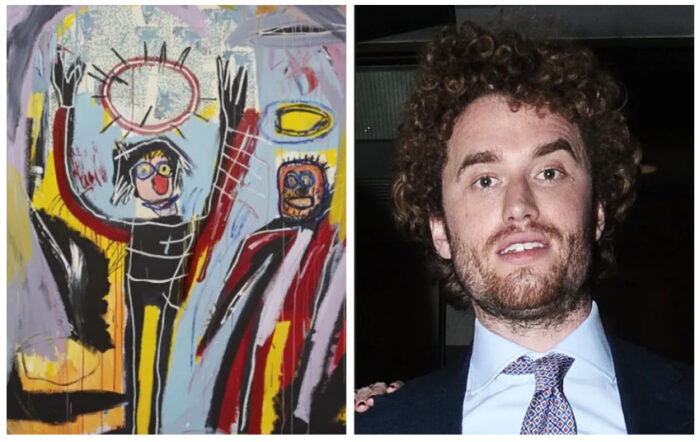
Inigo Philbrick, the once-prominent art dealer, has been released from prison after serving under four years of his seven-year sentence for an $86 million fraud. His lawyer, Jeffrey Lichtman, confirmed his release, stating that Philbrick is now home with his family. Philbrick’s release in February was reported by the Daily Mail, while Vanity Fair noted that he was released in January to home confinement and two years of supervised release. Philbrick declined to comment on his release or future plans when contacted via Instagram.
Celebrating Philbrick’s return, his fiancée, former Made in Chelsea star Victoria Baker-Harber, shared a photo of the couple and their daughter on Instagram, captioned with “A long stretch, but here we are!” Philbrick, known for his sharp eye in the art world, opened his gallery in 2013 after working at White Cube. However, his reputation soured in 2019, leading to business troubles when the market for certain artists cooled. To maintain his lifestyle, Philbrick resorted to fraudulent activities, misrepresenting ownership of works and forging documents.

In late 2019, suspicions about Philbrick’s dealings led to civil lawsuits for fraud, culminating in his fleeing to Vanuatu. He was arrested in June 2020 and pleaded guilty to federal wire fraud charges in November 2021. Despite facing a potential 20-year sentence, he was sentenced to seven years in March. In a separate case, Philbrick’s business partner Robert Newland received a sentence of one year and eight months for conspiracy to commit wire fraud. Philbrick’s case has brought attention to the risks of conducting high-value transactions with minimal transparency, shedding light on the vulnerabilities within the art market.
Philbrick’s rise and fall, marked by financial misconduct and dramatic escape attempts, captivated the art world. It served as a stark reminder of the pitfalls inherent in a market where transactions can be conducted discreetly. As Philbrick rebuilds his life post-release, his story continues to serve as a cautionary tale within the art industry, prompting reflection on the need for increased oversight and transparency in art transactions.
This post was originally published on this site be sure to check out more of their content.






